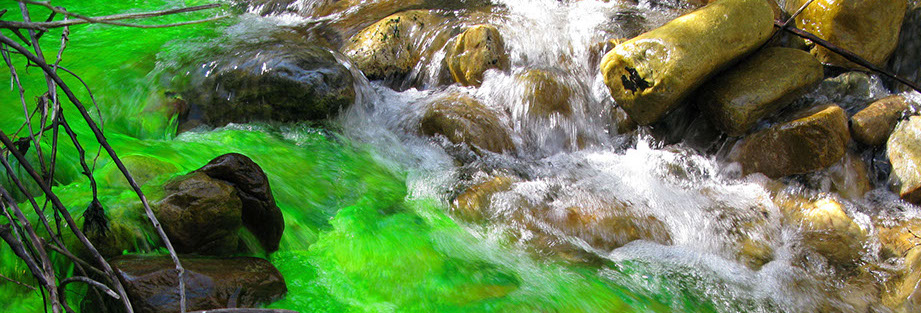Providing the Standard for Excellence in the Groundwater Tracing Industry Since 1973
Fluorescent Tracer Dye Specialists in Water and Land Use Investigations
417 785 4289
contact@OzarkUndergroundLab.com
The Ozark Underground Laboratory conducts water and land use investigations with special emphasis on karst and fractured rock landscapes.
We are the Industry Leaders in the development and implementation of practical and cost-effective strategies for tracing the movement of underground waters with fluorescent tracer dyes.

We provide outstanding professional services related to the interactions of surface and subsurface waters and the protection of groundwater quality.
The Ozark Underground Laboratory conducts water and land use investigations with special emphasis on karst and fractured rock landscapes.

The
Ozark Underground Laboratory, Inc. (OUL)
is a groundwater consulting firm that
provides a wide range of
hydrogeological services. We have
been in fulltime operation
since 1973 and have worked in
40 states,
2 territories, and 13 countries. We
specialize in the
subsurface migration of pollutants in
karst and fractured rock landscapes in
hydrologically and
politically sensitive areas.
• Tracer study plan development
• Field services for hydrogeologic assessment, dye introduction and monitoring
• State-of-the-art analytical services
• Groundwater tracing dye and supplies
• Data interpretation and evaluation
Groundwater Tracing Studies using Fluorescent Tracer Dyes
SCOPE of SERVICES
Aquifer Investigations
Aquifer Investigations in karst, fractured rock and porous
media environments that involve development
of study plans,
groundwater tracing, and data analysis
• Karst aquifer flow paths and groundwater discharge
• Groundwater transport rates through mobile porosity zones
• Development of groundwater monitoring strategies
• Groundwater-surface water interactions
• Leakage issues at impoundments and waste ponds
• Contaminant transport evaluations
• Mine reclamation and acid mine drainage control
• Sanitary, industrial, and radioactive waste landfills
• Zone of influence determinations for quarries and public water supply wells
• Leakage to groundwater from industrial pipes and drains
• Leakage to groundwater at nuclear power stations and refineries
• Response to catastrophic collapses and spills that affect groundwater
Delineation of Recharge Areas for Important Karst Features
• Caves, springs, and fen recharge areas
• Threatened and endangered species habitats
• Public water supplies
Groundwater Vulnerability Assessments in Karst Environments
• Determination of potential water quality hazards
• Assessment and mapping of susceptibility to future groundwater degradation
Sinkhole and Land Subsidence Issues
• Evaluation of sinkhole risks for waste facilities and high value properties
• Development of strategies to minimize risks
• Determination of causes of sinkhole collapses
• Development of sinkhole remediation recommendations
Hazardous Waste Site Investigations
• Source area identification
• Groundwater monitoring plan development
• In-situ groundwater remediation pilot tests
• Rates of groundwater travel through mobile porosity zones
• Flow barrier verification
Cave and Karst Management
• National Natural Landmark evaluations
• Radon management plans for show caves under an OSHA Alliance Agreement
• Air flow evaluations of off-site migration of TCE from a Superfund site
Professional Short Course Instruction
• Professional short courses for several professional organizations
• Educational field trips
Litigation Support
including expert testimony in court and depositions as well as expert report preparation
Previous cases have included sinkhole development induced by quarry pumping and improper storm water management, extent of groundwater contamination from sewage discharge to a losing stream, site suitability for sanitary landfills, adequacy of monitoring for landfills, and reasonableness of a very large monitoring and recovery program.
1572 Aley Lane | Protem, Missouri 65733 | Phone 417-785-4289 | FAX 417-785-4290
© Copyright Ozark Underground Laboratory 2016